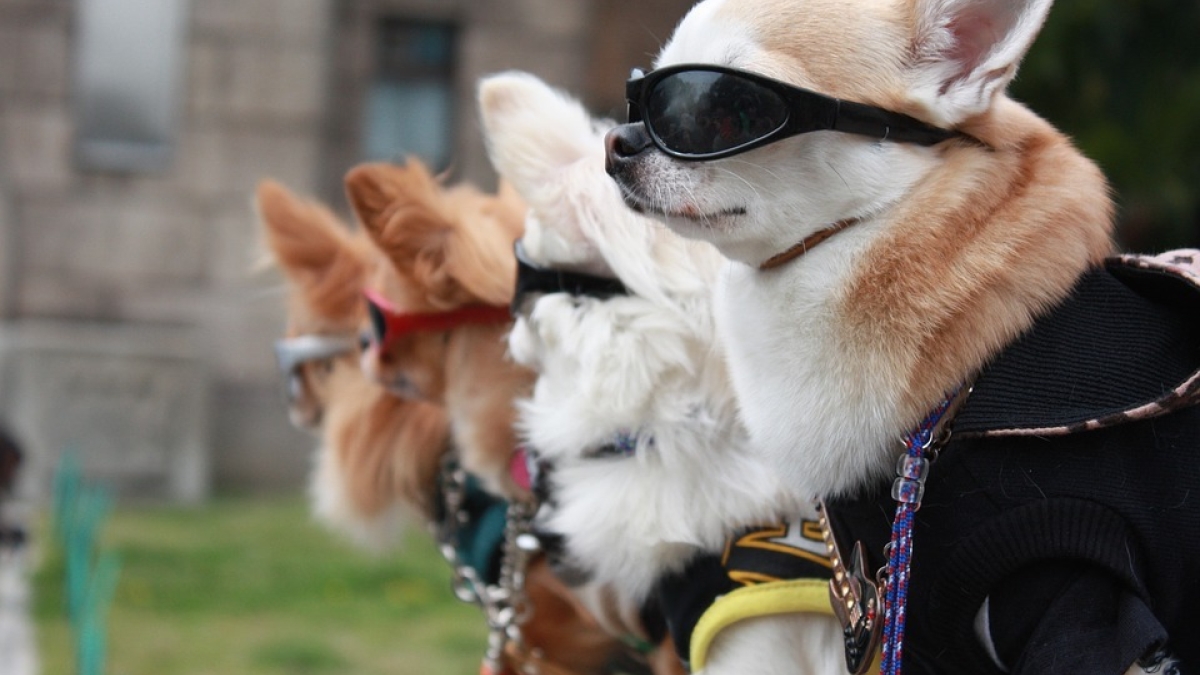Editor's note: July 3 marked the start of "the dog days of summer," the most sweltering days of the year. (For those of us in the Northern Hemisphere, anyway.) To help you make it through, ASU Now is talking to experts from around the university about everything dog, from stars to language to man's best friend. Look for new stories every week through Aug. 9.
---
“I went to the doctor today. Turns out I have up dog."
"What’s up dog?”
Boisterous laughter ensues.
The ruse above is only possible because everyone living in the modern era knows that “What’s up, dog?” is a common greeting between two people.
But we still may wonder about how we came to refer to other humans as “dog.” Not to mention how those furry, four-legged creatures dug their way so deeply into our language to begin with.
Rather than howling these thoughts at the moon, ASU Now sought the expertise of English professors and linguists Karen Adams and Don Nilsen. Luckily, we barked up the right tree, and they were able to throw us a bone.
Editor's note: Responses have been edited for length and clarity.
Question: Why do humans rely on idioms so much in language and communication?
Adams: In some cases, like with the “dog days of summer” or other animal metaphors, they’re more visually immediate for people. So that’s part of it.
Nilsen: Whenever the meaning of an expression is different from the literal meaning, it is termed metaphorical or idiomatic. Metaphors and idioms are necessary in order for a culture to adapt to changes in that culture. When new words or expressions are needed, metaphors or idioms are used in order to communicate. If we invent a valve that looks like a butterfly, we call it a “butterfly valve.” If we grow beans that look like a kidney in shape and color, we call them kidney beans. We also have elbow macaroni, etc.
Q: Why do we have so many animal idioms?
Nilsen: With metaphors and idioms, we have the source and the target. The source is something that is common and ordinary and always available, like animals, plants, body parts, weather, etc. These are the old words that we already know, but when culture changes because of paradigm shifts in science, culture or religion, we need of a lot of new words, so we talk about the shoulder of a road, or a dog-eat-dog (confrontational) world.
Q: Lots of dog idioms tend to have negative connotations, whereas a great many humans love dogs. Why the apparent contradiction?
Adams: Well, because yes, we love dogs, but do we love everything about dogs? Dogs kill things. They’re scavengers; they eat disgusting things. So yes, we love them and people go so far as to put them in clothes and strollers and treat them like family members, but they’re still not human. So there can be other aspects about them that are less desirable. My childhood dog used to roll in dead fish on the beach. It was one of his great joys in life, but we couldn’t let him in the house afterward; we had to bathe him in tomato juice and hope for the best.
Nilsen: Many of these idioms have negative connotations because they are slang/colloquial/vernacular, and speech tends to be more negative than writing. Note the difference between sarcasm — speech — and satire — writing. Notice the contrast between sacred or aristocratic and profane or ordinary or vulgar, as in “vulgar Latin” — the language of the common people: the colloquial-vernacular-slangy language.
Q: Don, you’ve presented on how animals communicate with each other through physical means, such as tail wagging. Are there any dog idioms that took inspiration from dog “language”?
Nilsen: His bark is worse than his bite. Barking up the wrong tree. To bark out a command. To growl at someone. Howling at the moon.
Q: Do you have any favorite dog idioms?
Nilsen: Dog tired: When dogs get tired, they just lie down, wherever they happen to be.
To dog-ear (bookmark) a book: It looks like the ears of a dog.
Dog days of summer: The hottest days of summer, when the wind doesn’t blow and sail boats are stranded. This is when Sirius, the dog star, rises and sets with the sun.
Sirius, the dog star: Its other name is “Alpha Canis Majoris” because it is the brightest star in the constellation Canis Major. Canis Major follows Orion (the hunter) across the Zodiac constellations.
To have a dog in the fight: To be prejudiced, one way or the other.
Raining cats and dogs: In medieval times, rainstorms would cause flooding that would catch the cats and dogs as the water headed toward the drains.
Gone to the dogs: No longer fit for human use.
It’s a dog-eat-dog world: Because of how dogs fight.
More dog days
- Let's get Sirius — how star alignment has meant to humans and their language
- What we really get from loving dogs
Top photo: Courtesy Pixabay
More Arts, humanities and education

Exhibit to feature artwork inspired by oral histories from Arizona's oldest botanical garden
Though it is Arizona's largest botanical garden and has been an established touchstone of the community for more than 100 years, many students in Arizona State University Professor Ellen…

ASU center to host Spike Lee for Delivering Democracy 2025 program
The Center for the Study of Race and Democracy at Arizona State University will host Academy Award-winning filmmaker and cultural icon Spike Lee on March 1 for its annual Delivering Democracy…

ASU professor explores theater, dance for young children in new book
Arizona State University Assistant Professor Amanda Pintore believes in the artistic capacity of very young children. She's hoping to spread that awareness to others with the recent publication of…
